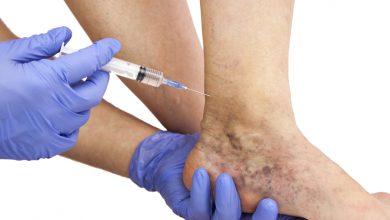
Deep vein thrombosis or DVT is known as blood clot by medical practitioners. Blood clots often attack the lower part of the body; it begins in the leg and may go as far as the lungs, causing an embolism. Although DVT has several symptoms, the most popular of them are pain, redness, and swelling. An embolism is a deadly disease that affects people of any age.
DVT is caused by a buildup of microscopic particles called fibrin and red blood cell. Over time they become thicker; blocks the veins and hinders the flow of blood. This condition leads to swelling and pain if a patient stands for too long.
Common Risks Of DVT
There are some risks associated with DVT. The risks are due to feeling inactive and causing trauma to some parts of the body. This trauma may affect the leg, causing a leg fracture. In addition to this, DVT can cause the formation of thick blood; a condition known as hypercoagulable.
Treatment For DVT
There are four goals for treatment of DVT. They are:
- Reduce the risk of another blood clot
- Prevent the clot from breaking off in your vein and moving up your lungs
- Stop the clot from getting bigger
- Prevent long-term complications from the blood clot
There are three methods of treatment that can help a patient reach these goals. They are via medication, compression stockings and DVT Treatment Procedures.
Medication
The main form of medication for DVT is anticoagulants. This is basically a blood thinner. This medication will make it harder for your blood to clot. Anticoagulants will prevent clots from getting bigger and from moving. This will not destroy the clots;however, in most cases the body will dissolve the clot naturally. There are cases where the clot does not go away completely. A common side affect of anticoagulants is bleeding.
Compression Stockings
Compression stockings will help alleviate the leg swelling. More specifically, graduated compression stockings are recommended for people with deep vein thrombosis. Most of the time compression stockings are worn below the knee and are tight at the ankle and become looser as they go up the leg. This puts gentle compression on your leg.
DVT Procedures
If a patient cannot take medication to thin their blood of if they have blood clots while on medication, then vena cava filters are used. The vena cava filter stops blood clots from migrating from the vein in your legs to your lungs. To have this filter put in, a patient will have to undergo a minor surgery. This procedure prevents pulmonary embolisms.
Deep vein thrombosis is a condition that should be taken seriously. If you feel like you have any symptoms of DVT, then you should see your doctor immediately. Your doctor will be able to determine the best type of treatment to alleviate the blood clot.




